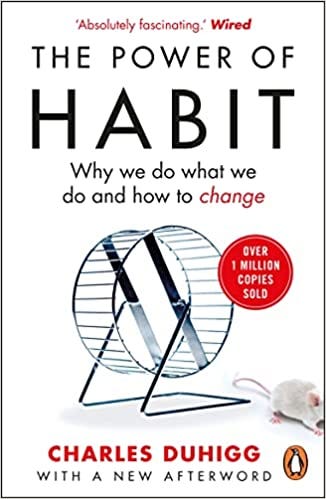Hey
What was the first thing you did when you woke up this morning? Did you shower, check your email or had your tea/coffee? Did you brush your teeth before or after your shower? What route did you take to work?
Chances are that whatever you did, you have been pretty much doing the same for the past many days.
Habits, you see.
A study from Duke University in 2006 revealed that over 40% of daily actions are not conscious decisions, but rather habits!
Before we get into the newsletter, a quick recap and an announcement:
We are now going to have monthly themes for the AtomicIdeas newsletter. For Jan month, it’s habit building (checkout the rest here).
The subscribers from India aren’t able to subscribe (Stripe really sucks). Have enabled an alternative payment method from Razorpay.
You can now refer your friends to AtomicIdeas and win free access to the newsletter! 😎
And now, sharing today’s AtomicIdeas from a book, which brings ton of scientific perspectives to habit building (and changing) processes.
The Power of Habit: Why We Do What We Do In Life And Business by Charles Duhigg
Sharing key ideas from the book that will truly help you in your habit building journey.
“Willpower isn’t just a skill. It’s a muscle, like the muscles in your arms or legs, and it gets tired as it works harder, so there’s less power left over for other things.”
#1: How Habits Emerge
“Habits, scientists say, emerge because the brain is constantly looking for ways to save effort. Left to its own devices, the brain will try to make almost any routine into a habit, because habits allow our minds to ramp down more often.”
Biologically, we form habits to save energy, so anything we do regularly will become a habit.
So, How are habits formed?
#2: The Habit Loop: Cue, routine, reward
This process within our brains is a three-step loop.
First, there is a cue, a trigger that tells your brain to go into automatic mode and which habit to use.
Then there is the routine, which can be physical or mental or emotional.
Finally, there is a reward, which helps your brain figure out if this particular loop is worth remembering for the future.
CUE + ROUTINE + REWARD = HABIT
Note: The habit loop is driven by cravings.
#3: The Golden Rule: You CAN’T remove a bad habit
“The Golden Rule of Habit Change: You can’t extinguish a bad habit, you can only change it.”
Habits are hard-wired into our brains. So, while it would be nice to be able to erase this hard-wiring, it’s not possible.
So, we have to be intentional about changing our bad habits into good ones, rather than focusing on eliminating the bad ones from our system.
#4: How to change habits
CUE + ROUTINE + REWARD = HABIT
To change a habit, you must
keep the old cue, and
deliver the old reward,
but insert a new routine.
That’s the rule: If you use the same cue, and provide the same reward, you can shift the routine and change the habit. Almost any behavior can be transformed if the cue and reward stay the same.
For example, one could replace the habit of smoking a cigarette with another activity when they drink their morning coffee (cue and reward pretty much remains the same)
#5: Define your Keystone Habits
Some habits have the power to start a chain reaction, changing other habits as they move through an organization. Some habits, in other words, matter more than others in remaking businesses and lives.
These are the keystone habits.
“Keystone habits transform us by creating cultures that make clear the values that, in the heat of a difficult decision or a moment of uncertainty, we might otherwise forget.”
For example, regular exercise can act as a catalyst for other healthy habits. After a workout, one is more inclined to make healthier food choices such as a protein shake, instead of a cheeseburger and french fries.
Happy habit-ing :)
-ashish.




